
8 Oldest Founded Small Towns To Visit In The Ozarks
Many believe the Ozarks feature the roughest, most rugged terrain. That it is home to the oldest hills and clearest waters. And that it boasts one of the most heart-melting landscapes in the world. The truth is, the Ozarks is not recommended, especially for those who cannot endure an adventure marked by continuous goosebumps. For those who want to peer through the foggy past, in a region where Natives once roamed free in what was once a rugged, inhospitable territory, the following towns offer the clearest windows to the past. Starting with Ste. Genevieve, Missouri, discover the 8 oldest-founded small towns to visit in the Ozarks.
Ste Genevieve, Missouri
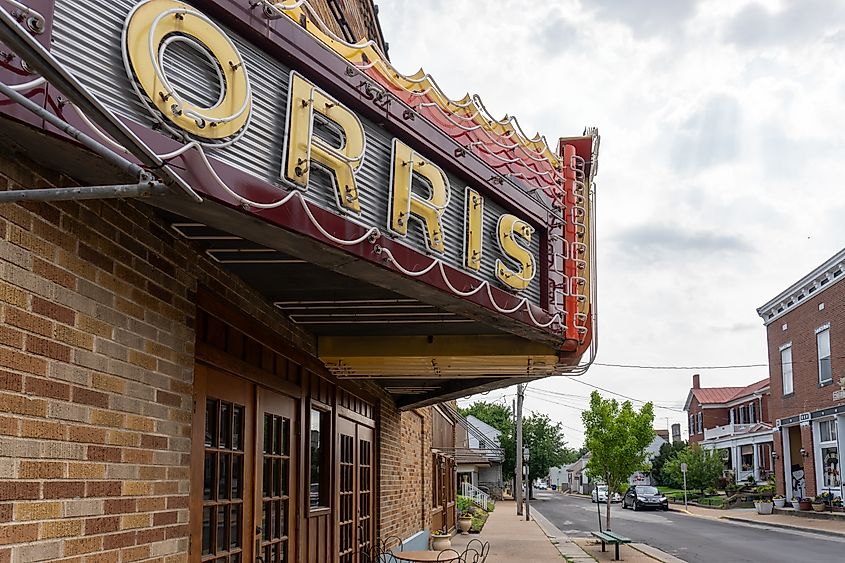
Ste. Genevieve is the oldest town in the Ozarks and the first permanent, non-Indigenous settlement West of the Mississippi River. It sits on the rustic shores of the Big Muddy about 60 miles south of St. Louis. The town owes its founding to French Canadians — possibly as early as 1735. The famous Jour de Fête à Ste, held the second full weekend in August, is southeast Missouri’s largest outdoor crafts fair. Historic French homes, including the Bolduc and Amoureaux houses, provide a glimpse into the town’s history and cultural heritage. There is the Ste Genevieve Museum Learning Center as well, right on Market Street, which keeps life-size models of dinosaurs and tons of fascinating history about the area. A plate of homemade pies at Anvil Restaurant & Saloon should prime one for a full day of fun and adventure.
Cape Girardeau, Missouri
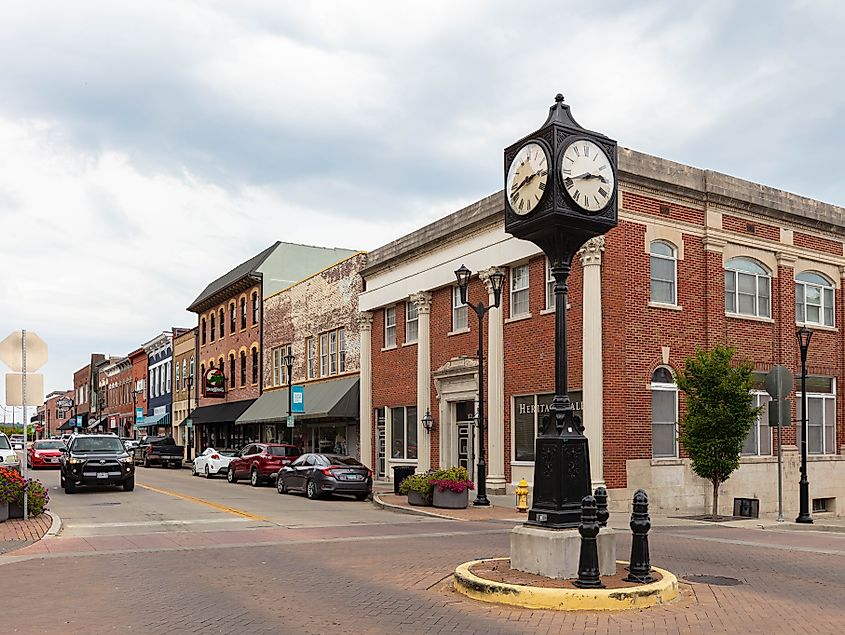
About an hour from Ste. Genevieve via Interstate 55, one finds Cape Girardeau, a vibrant town of about 40,000 residents that boasts over 250 years of rich history and heritage. Cape Girardeau rests on the southeast edge of the Ozark Plateau and was established before 1793 by Pierre-Louis de Lorimier, a colonial French-Canadian fur trader, whose memory is today honored by place names such as Fort Loramie, Ohio and the Lake Loramie State Park. Trail of Tears State Park, which commemorates one of the saddest chapters in American history; the forced migration of the Cherokee Indians, is just about 10 miles north of town. There is also the Historic Fort D, a quaint little fort that overlooks the Mississippi with interesting plaques to read. Enjoy an afternoon at Century Casino Cape Girardeau, loved for its great selection of slot machines; Cape Rock Park, where the area's original trading post was established around 1733; or Capaha Park, to mingle with ducks and geese and walk around a beautiful pond.
Caledonia, Missouri
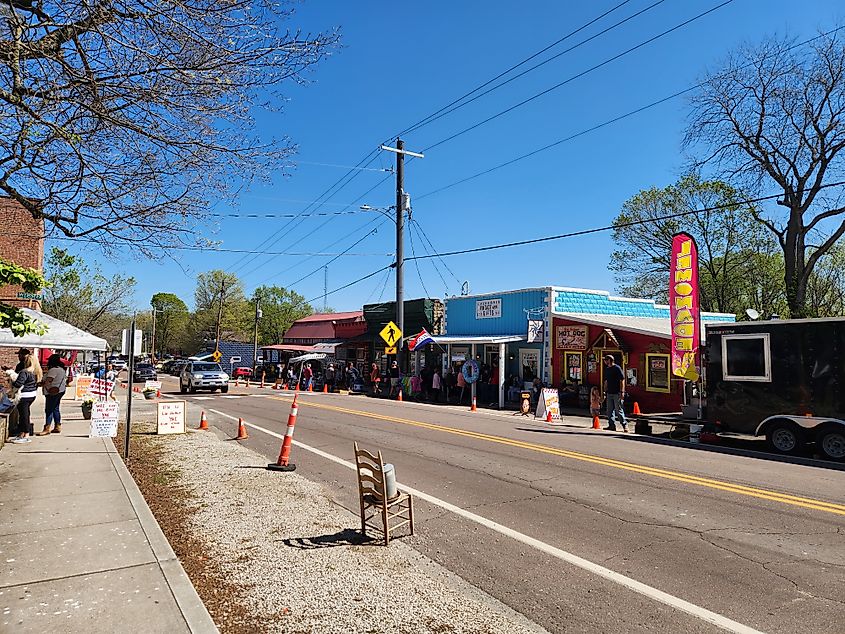
Those who have traveled down Missouri Highway 21, especially between Potosi and Caledonia, may have seen the signboard that reads "Entering Historical Bellevue Valley - Settled 1798." Caledonia’s founding is tied to the life and work of Alexander Craighead, a Scots-Irish pioneer and entrepreneur, who established the town in 1819 and named it after his homeland across the Atlantic. Caledonia is Latin for Scotland. Start your adventure at the Old Village Mercantile, an awesome place with an old-school charm that serves top-tier coffee, candy, and ice Cream. It has been around since 1909 and is listed on the National Register of Historic Places. The Old Caledonia Bed & Breakfast, in the historic Ruggles-Evans-Dent House, was built in 1849; and hence, predates the Civil War by more than a decade. That said, it would be inconceivable to come all the way to Caledonia without setting foot on Elephant Rocks State Park, where outdoor enthusiasts wend their way between enormous granite boulders — while inhaling one of the most beautiful views for miles.
Jefferson City, Missouri
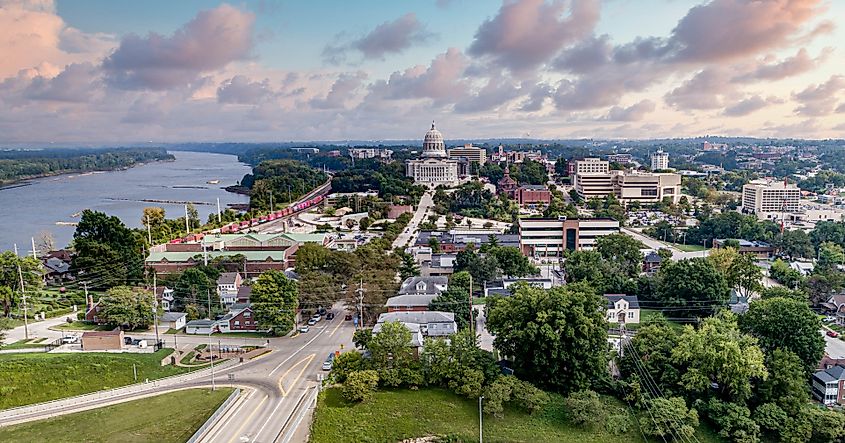
Although a state capital, Jefferson City’s population is just about 43,000. Thomas Jefferson, thanks to his remarkable foresight, is credited with facilitating the Louisiana Purchase of 1803. It doubled the size of the United States and brought in Missouri as part of the United States. When Missouri achieved statehood in 1821, a commission appointed by the Missouri state legislature selected Jefferson City as the state capital. The site was named for the third president of the United States. It was incorporated four years later in 1825. The capitol, one of the town’s defining landmarks, contains celebrated murals by Thomas Hart Benton, arguably the most innovative practitioner of mural painting. Tucked away on the northern Ozark border, Jefferson City hosts the wildlife-filled Runge Nature Center, the 644-acre Binder Park (the site of a beautiful lake), and the river-fronting Ellis-Porter Park, a fantastic community park with a pool and an amphitheater.
Batesville, Arkansas
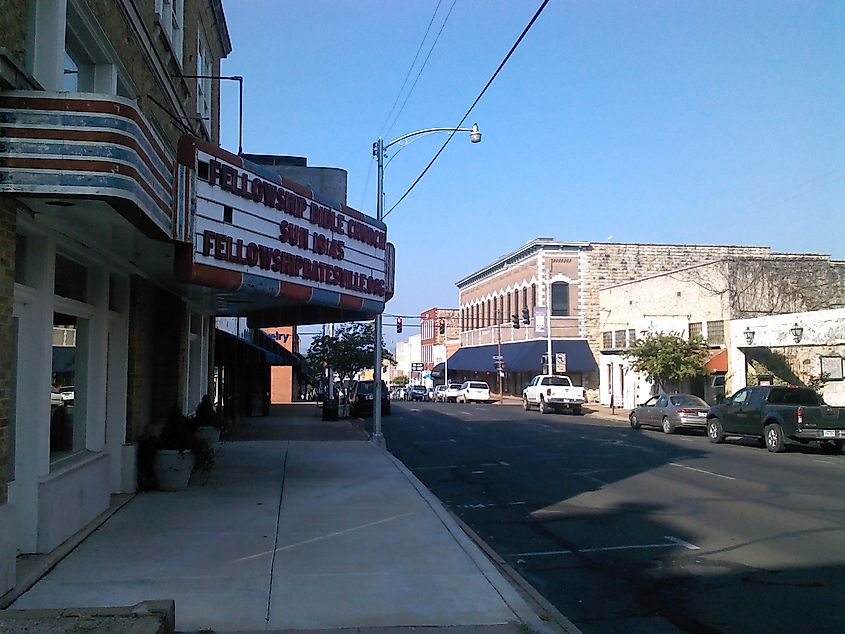
Batesville lies in the foothills of the Ozark Mountains about 90 miles northeast of Little Rock, the seat of Pulaski County and the capital of the state. The town was founded in 1812 by John Reed, a U.S. poet-adventurer who — because of his brief but notable fame as a Revolutionary writer — was a hero of a generation of radical intellectuals. Batesville sits on the 685-mile White River, the site of numerous recreational opportunities. It hosts the annual Arkansas Scottish Festival, an event that has been taking place each spring since 1980. Enjoy a hearty breakfast at Whistle Stop Cafe, before stepping back in time at Old Independence Regional Museum, which provides a self-paced stroll through the history of Independence County, Batesville, and the eastern Ozarks.
Fort Gibson, Oklahoma
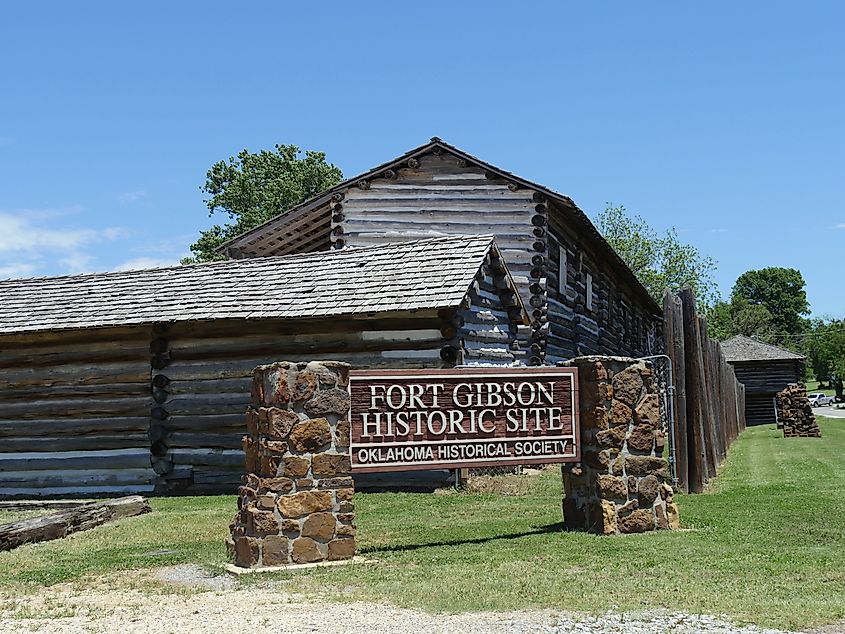
A first-time visitor will find Fort Gibson at the junction of U.S. Highway 62 and State Highway 80, just nine miles east of Muskogee. This town was founded in 1824 to settle strife between the Osage and the Cherokee. Reputed to be among the oldest non-Indian settlements in Oklahoma, Fort Gibson is a town of many firsts, including the first drama theater, the first steamboat landing, and the first telephone. Mingle with white-tailed deer at Fort Gibson Wildlife Management Area, which spans more than 20,000 acres, enjoy paddlefishing at the Grand River, and float on Fort Gibson Lake — before crowning it all with quality Tex-Mex cuisine at Fajita Rita’s, a family-owned eatery known for sizzling fajitas. Fort Gibson Historic Site, with its original and restored 19th-century architecture, is not to be missed either.
Pocahontas, Arkansas
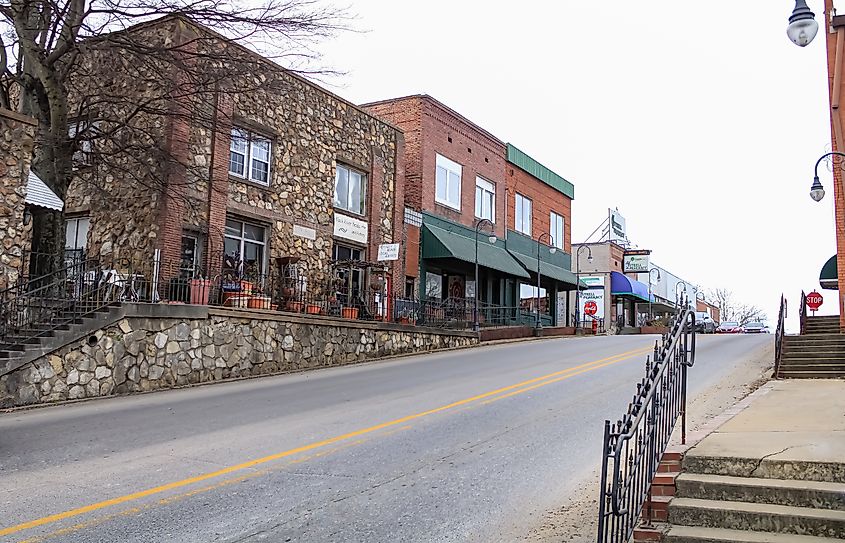
Several years ago, a Missouri Native called Ransom S. Bettis came down the Black River looking for a site for a trading post and ferry. The year — according to many accounts — was 1817. The enterprising traveler settled on a limestone bluff above the port area. Soon after, the spot was called Bettis Bluff. When Randolph County was created 18 years later, in 1835, this settlement was named the new county seat and was promptly baptized “Pocahontas.” Today, Pocahontas retains much of its historic downtown business square, a stretch loved for its endearing, old-timey feel. It features the handsomely restored 1872 Victorian Italianate courthouse, positioned at the southwest corner of Broadway and North Marr Street. One can catch a mood-lifting show at the new Imperial Dinner Theatre, where live stage productions are often accompanied by an exquisite meal, curating a memorable dinner-theater experience. There is the Studio for the Arts as well, housed in the former Imperial Theatre, which provides an eclectic menu of entertaining experiences, including drama, ballet, and art.
Tahlequah, Oklahoma
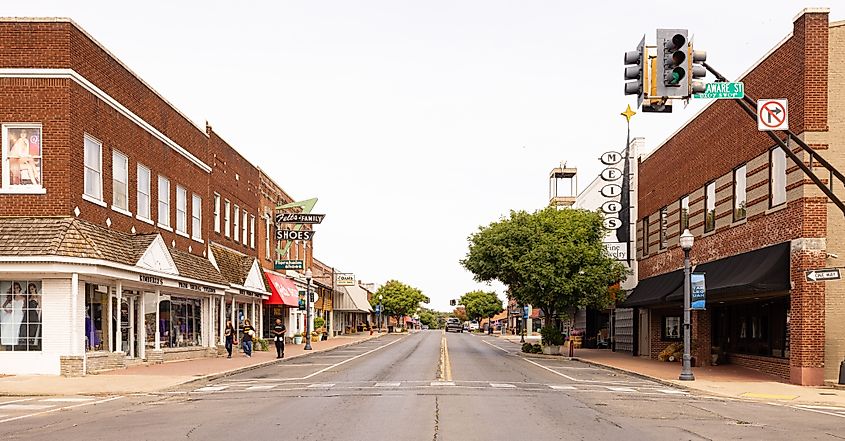
Tahlequah — Cherokee word for "just two," or "two is enough,” — is about 30 minutes from Fort Gibson, in the Southwestern foothills of the Ozark Mountains. Tahlequah was founded between 1838 and 1839. It was the first government capital of the Indian Territory, especially after the heart-rending events that defined the aptly named Trail of Tears. Important Tahlequah landmarks include Northeastern State University, founded about a decade before the Civil War as the Cherokee National Female Seminary; the Cherokee Heritage Center, the iconic Capitol, the National Prison, and the Murrell Home, an exquisite example of a beautiful antebellum mansion. For those who want to sniff some fresh air or wander through the woods, Sequoyah State Park should come in handy.
The Takeaway
The Ozarks, sometimes wild and tangled; other times green and lush like a golf course, is among the most beautiful regions in the United States. A melting pot of culture, featuring the cigar-box banjoes of the African Americans on one side — and fiddles, dulcimers, and guitars on the other — this vast wonderland has a lot in store for history buffs. To step back in time, and relive centuries of fascinating history, vacationers should pick the oldest towns in the Ozarks and position these as bases of exploring and experiencing what the region offers. For specific recommendations, the oldest towns in the Ozarks include Ste. Genevieve, Missouri; Cape Girardeau, Missouri; and Tahlequah, Oklahoma.











